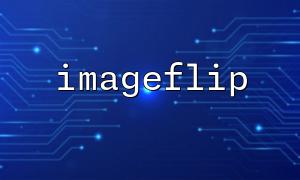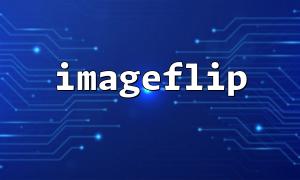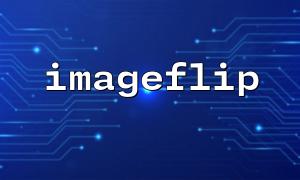In the field of PHP image processing, imageflip() is a very practical function that allows us to flip images horizontally, vertically, or bidirectionally. This kind of operation is widely used in image editing, image special effects generation and even image recognition preprocessing. So how is this function implemented at the bottom? How are images organized in memory? This article will take you to analyze the implementation principle of imageflip() from the perspective of memory structure.
imageflip() is a function in the PHP GD library, and its basic syntax is as follows:
bool imageflip(GdImage $image, int $mode)
where $mode can be one of the following constants:
IMG_FLIP_HORIZONTAL : Horizontal flip
IMG_FLIP_VERTICAL : vertical flip
IMG_FLIP_BOTH : Flip horizontally and vertically simultaneously
Sample code:
$image = imagecreatefromjpeg('https://m66.net/images/sample.jpg');
imageflip($image, IMG_FLIP_HORIZONTAL);
imagejpeg($image, 'flipped.jpg');
imagedestroy($image);
PHP uses the GD library to process images, and all image resources are represented in memory as gdImage structures (implemented at the C level). In this structure, each pixel of the image is stored in the form of a two-dimensional array, and the structure is roughly as follows:
typedef struct {
int sx; // Image Width
int sy; // Image height
int **pixels; // Pointer to pixel array
...
} gdImage;
Each pixel is an integer, usually 32 bits, containing the information of RGBA.
At the C language level, PHP's imageflip() actually reorders the pixel data in the gdImage structure. Let's use horizontal flip as an example to illustrate its principle:
Iterate through each row of the image and then swap pixels symmetrical left and right in each row. For example, for images with width 4:
original: A B C D
Flip: D C B A
The underlying implementation of pseudo-code is as follows:
for (y = 0; y < image->sy; y++) {
for (x = 0; x < image->sx / 2; x++) {
temp = image->pixels[y][x];
image->pixels[y][x] = image->pixels[y][image->sx - 1 - x];
image->pixels[y][image->sx - 1 - x] = temp;
}
}
At this time, iterate through each column of the image and then exchange rows of up and down symmetric:
original:
1OK: A B C
2OK: D E F
3OK: G H I
Flip:
1OK: G H I
2OK: D E F
3OK: A B C
pseudocode:
for (y = 0; y < image->sy / 2; y++) {
temp_row = image->pixels[y];
image->pixels[y] = image->pixels[image->sy - 1 - y];
image->pixels[image->sy - 1 - y] = temp_row;
}
This operation is to execute the above two processes one by one.
Since PHP is a reference counting mechanism, to prevent image resources from being erroneously released or reused, each time it is processed, it is ensured that the $image resource is the unique copy. In addition, in order to avoid memory leaks, developers need to manually release image resources:
imagedestroy($image);
This will clear the memory occupied by gdImage .
Many social platforms allow users to flip uploaded avatars, which can be implemented using the following simple code:
if ($_FILES['avatar']['tmp_name']) {
$image = imagecreatefromjpeg($_FILES['avatar']['tmp_name']);
imageflip($image, IMG_FLIP_VERTICAL);
imagejpeg($image, '/var/www/m66.net/uploads/flipped_avatar.jpg');
imagedestroy($image);
}
Although the implementation principle of imageflip() is simple, it reflects how image data is stored and operated in two-dimensional ways in memory. After mastering this principle, you can not only use PHP image functions more flexibly, but also lay a good foundation for further development of image processing libraries.
Whether it is making flipped renderings, achieving image enhancement, or performing more complex image calculations, understanding the memory structure of an image is always the basis for a key step.















